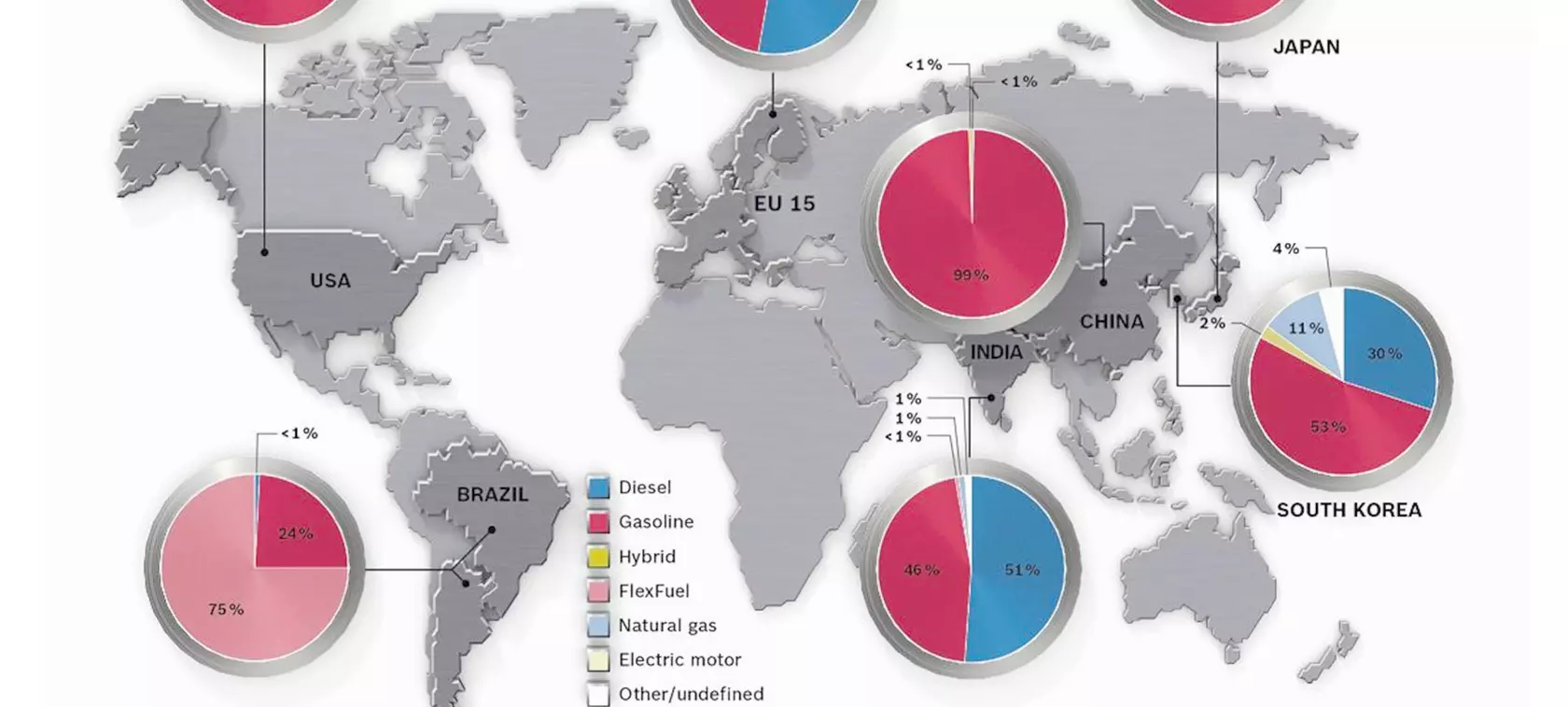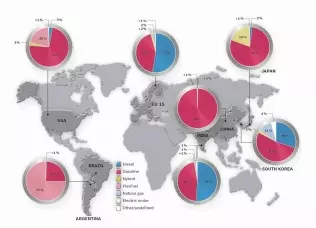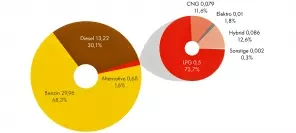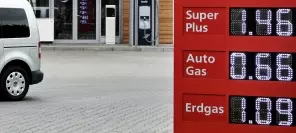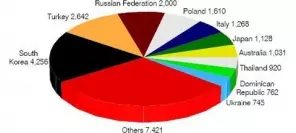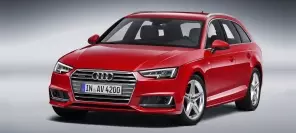- Main page
- Search
- Up to date
- Products
- Technology
- Vehicles
- Video
- Conversion Payback Simulator
Port Injection - Conversion Payback Simulator
Direct Injection - Conversion Payback Simulator
Diesel - Newsletter
 loading results...
loading results...Engines running on natural gas are becoming popular worldwide – as estimated by Bosch, annual rise rates in the field are 25% and they haven't dropped in the past 10 years. This obviously means the number of CNG-powered vehicles around the globe is growing, too. For example, as much as 11% of all cars in South Korea now run on methane. No wonder the world is falling in love with the fuel – it's half the price of petrol and cuts tank-to-wheel CO2 emissions by up to 25%.
Flex-fuel engines on the other hand, i. e. those running on ethanol and/or petrol (or mixture of both), enjoy particular popularity in the Americas, especially in Brazil The US take the second spot, perhaps somewhat surprisingly. As far as pure petrol engines go, they rule almost completely in China. According to Bosch, spark-ignited engines account for nearly 100% of new car sales in the country. Petrol is also the fuel of choice for approximately 75% car buyers in the US and Japan.
As far as petrol engines are concerned, for the most part (over 50%) they still utilise port injection solutions, even despite the hyped and apparently inevitable advent of direct injection technologies. Sooner or later downsizing and direct injection will prevail – they're already growing stronger year to year. And what about diesels? They remain popular in Europe, with roughly 50% new cars sold in the European Union featuring oil-burning engines. The same holds true for India.
Clearly, there's much diversity around the world. Interestingly, even despite diesel's popularity in Europe, the continent remains one of the most ardent users of gaseous fuels, with over 11 million cars running on LPG alone. As far as LPG and CNG go, the untapped potential of China is huge, especially since nearly all cars sold there currently run on petrol, which makes them easy to convert. Is China about to become the next promised land for gaseous fuels? We can't see why not.
